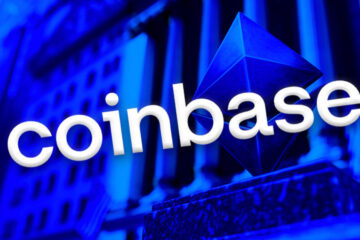Binance BNB Chain’s stablecoin reserves expanded sharply this week, adding more than $2 billion in value following the debut of USD1, a politically branded dollar token issued by World Liberty Financial.
DefiLlama data shows that the chain’s stablecoin market capitalization surged 30% over the past seven days to reach $9.26 billion. That gain narrowed the gap between BSC and Solana to just $3.8 billion, marking the closest distance between the networks since memecoins propelled Solana ahead.

USD1’s introduction on BSC coincided with its positioning as an institutional-grade stablecoin backed by U.S. Treasury bills and safeguarded by BitGo. Its launch comes at a time when stablecoins broadly have been regaining momentum. The sector’s total market capitalization rose 2.5% this week to $240.47 billion, indicating renewed on-chain activity despite ongoing regulatory headwinds.
The sharp expansion in BSC’s stablecoin supply may alter the competitive landscape among layer-1 blockchains. While Ethereum continues to dominate with more than $124 billion in stablecoin assets, amounting to 52% market share, and Tron retains a commanding 29% share at $71 billion, BSC’s increase to 3.8% brings it within reach of Solana’s 5% share.
There is now a chance of BSC overtaking Solana in stablecoin volume amid the Solana memecoin collapse, which could redirect liquidity flows and developer attention across decentralized finance platforms.
USD1’s growth on BSC reflects both strategic and political dimensions. The token, promoted as fully audited and compliant, carries the association of former U.S. President Donald Trump through its issuer, World Liberty Financial.
This link introduces new regulatory and reputational considerations not typically associated with other dollar-backed assets. BitGo’s involvement as custodian, combined with the stablecoin’s fiat and T-bill backing, positions USD1 as a direct challenger to entrenched competitors such as USDT and USDC.
Momentum around USD1 accelerated further as Eric Trump announced the stablecoin will be used to settle MGX’s $2 billion investment in Binance. He described the move as a major step toward creating a transparent, regulated, and borderless digital dollar, adding new weight to USD1’s institutional ambitions and potential role in large-scale capital flows.
USD1 is currently placed 7th by market cap among all stablecoins, beating out PayPal PYUSD, FDUSD, and Ethena USDTB.


While the on-chain expansion signals interest, liquidity remains thin. Major exchanges have not listed USD1; full audit details, including smart contract assessments and reserve attestations, have not been disclosed publicly. Incentive programs driving early adoption may also be temporary, raising questions about the sustainability of the current momentum.
World Liberty Financial’s Zach Witkoff framed USD1 as an enabler for “sovereign investors and major institutions” to conduct secure cross-border settlements. Others voiced caution. Kevin Lehtiniitty of Borderless.xyz remarked that while launching a stablecoin is simple, cultivating meaningful adoption remains complex and uncertain.
Still, the debut has already reshaped stablecoin trends on BSC. Should USD1’s liquidity deepen and audit transparency improve, BSC’s proximity to Solana could herald a reshuffle of the layer-1 hierarchy. For now, the influx of capital is the most significant weekly jump in BSC’s stablecoin market since early 2023.
 Bitcoin
Bitcoin  Ethereum
Ethereum  Tether
Tether  XRP
XRP  USDC
USDC  TRON
TRON  Lido Staked Ether
Lido Staked Ether  Dogecoin
Dogecoin  Figure Heloc
Figure Heloc  Cardano
Cardano  WhiteBIT Coin
WhiteBIT Coin  Bitcoin Cash
Bitcoin Cash  Wrapped stETH
Wrapped stETH  Wrapped Bitcoin
Wrapped Bitcoin  USDS
USDS  Wrapped eETH
Wrapped eETH  Binance Bridged USDT (BNB Smart Chain)
Binance Bridged USDT (BNB Smart Chain)  Chainlink
Chainlink  Monero
Monero  LEO Token
LEO Token  WETH
WETH  Zcash
Zcash  Stellar
Stellar  Coinbase Wrapped BTC
Coinbase Wrapped BTC  Ethena USDe
Ethena USDe  Hyperliquid
Hyperliquid  Litecoin
Litecoin  Sui
Sui  Avalanche
Avalanche  Hedera
Hedera  sUSDS
sUSDS  Shiba Inu
Shiba Inu  USDT0
USDT0  Dai
Dai  Canton
Canton  Uniswap
Uniswap  PayPal USD
PayPal USD  Mantle
Mantle  Cronos
Cronos  World Liberty Financial
World Liberty Financial  Toncoin
Toncoin  Ethena Staked USDe
Ethena Staked USDe  Polkadot
Polkadot  USD1
USD1  Aave
Aave  Rain
Rain  Bitget Token
Bitget Token  MemeCore
MemeCore 


